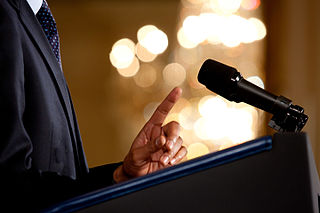Often the hardest part of making a presentation is getting started.Once you begin, adrenaline kicks in, you become excited talking aboutyour topic, and you find that the experience is actually enjoyable.
Following are five easy ways to begin a presentation:
- Tell a story
- Establish a common bond with the audience
- Directly address your subject
- Illustrate a point
- Use humor
Beyond serving to "jump-start" your presentation, introductions havea specific purpose. Good introductions should actually accomplish thefollowing:
- Capture the audience's attention by using one of the following techniques:
- Ask a question
- Tell a joke
- Give a quotation
- State a startling fact
- Give an example
- Illustrate a point
- Tell a story
- Refer to an occasion
- Refer to a historic event
- Establish a common bond
- Establish your credentials to speak to the audience
- Establish your empathy with the issue, problem, or subject
- Establish your desire to present your information
- Provide your audience a reason to stay for the rest of your presentation
- Provide an easy transition to the body of your speech
How to prepare conclusions
A poor closing statement can ruin the lasting impression of awell-prepared and superbly delivered presentation. Conclusions are alsoan important, and often, overlooked element of presentations.
Conclusions should be used to review your main points. This can beaccomplished by using one of the following techniques:
- Repeat your points in order of delivery
- Summarize your main points
- Combine a summary and a repetition
Ideally, presentations should end with a memorable statement. Use thefollowing techniques to create a memorable statement:
- Synopsize your main theme
- Ask the audience to do take an action
- Paint a verbal picture of the future
- Return the audience to the past
- Transition the audience to what will follow
Never do the following in the conclusion of a presentation:
- Draw out your conclusion
- Apologize for not doing a good job
- Tell a dumb joke or story
- Say that you've forgotten something
- Steal an upcoming speaker's thunder
How to practice
Once your presentation is fully developed and fine-tuned to yoursatisfaction, it is time to practice your delivery. Use the followingform to successfully and effectively practice presentations.
- Pretend you are in front of your audience; practice everything (e.g., eye contact, voice inflections, gestures, using your notes)
- Practice acting naturally
- After you are familiar with your speech, practice in front of a mirror or videotape yourself
- Practice in different locations to prepare yourself for the unknown
- Practice in front of people who will give you constructive feedback
- Become familiar with your speech before you begin practicing the use of visual supports
- Practice using eye contact and gestures along with visual supports
- Practice using visual supports in different rooms under different lighting
Use the following checklist to assist you in practicing yourpresentation:
- Practice your speech at least six times
- Become familiar with your broad themes
- Practice silently at first, making notes to yourself on eye contact, gestures, tone, and timing
- Practice your entire speech each practice session
- Practice in front of a mirror or videotape yourself
- Practice using your audio-visual supports
- Once you are prepared, stop practicing
Author

Randall P. Whatley
Randall P. Whatley is president of Cypress Media Group, an advertising, public relations, and training firm. Cypress Media Group provides training primarily related to business and technical writing, presentation skills, and media relations. He can be reached by e-mail at randy@cypressmedia.net.






